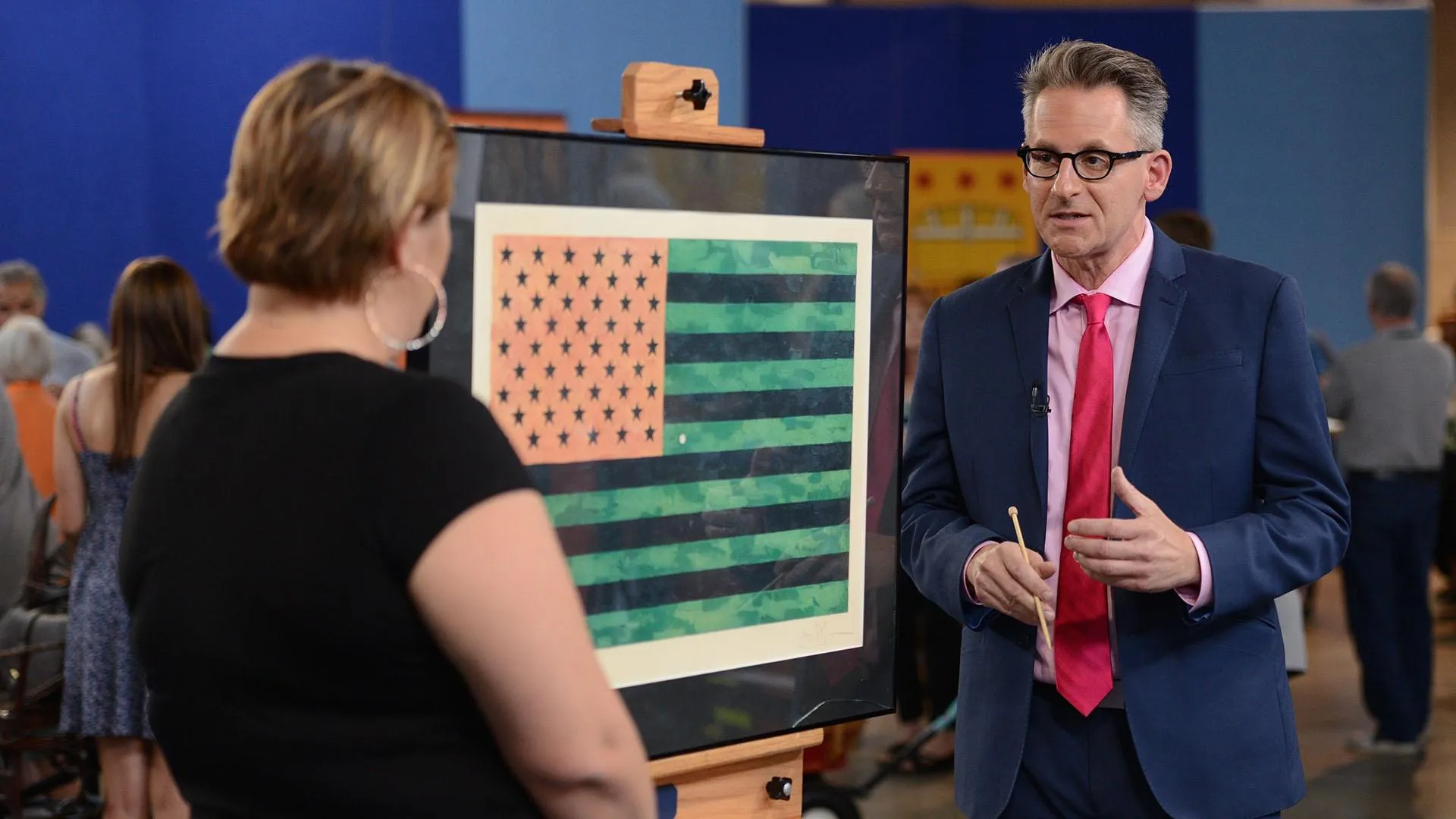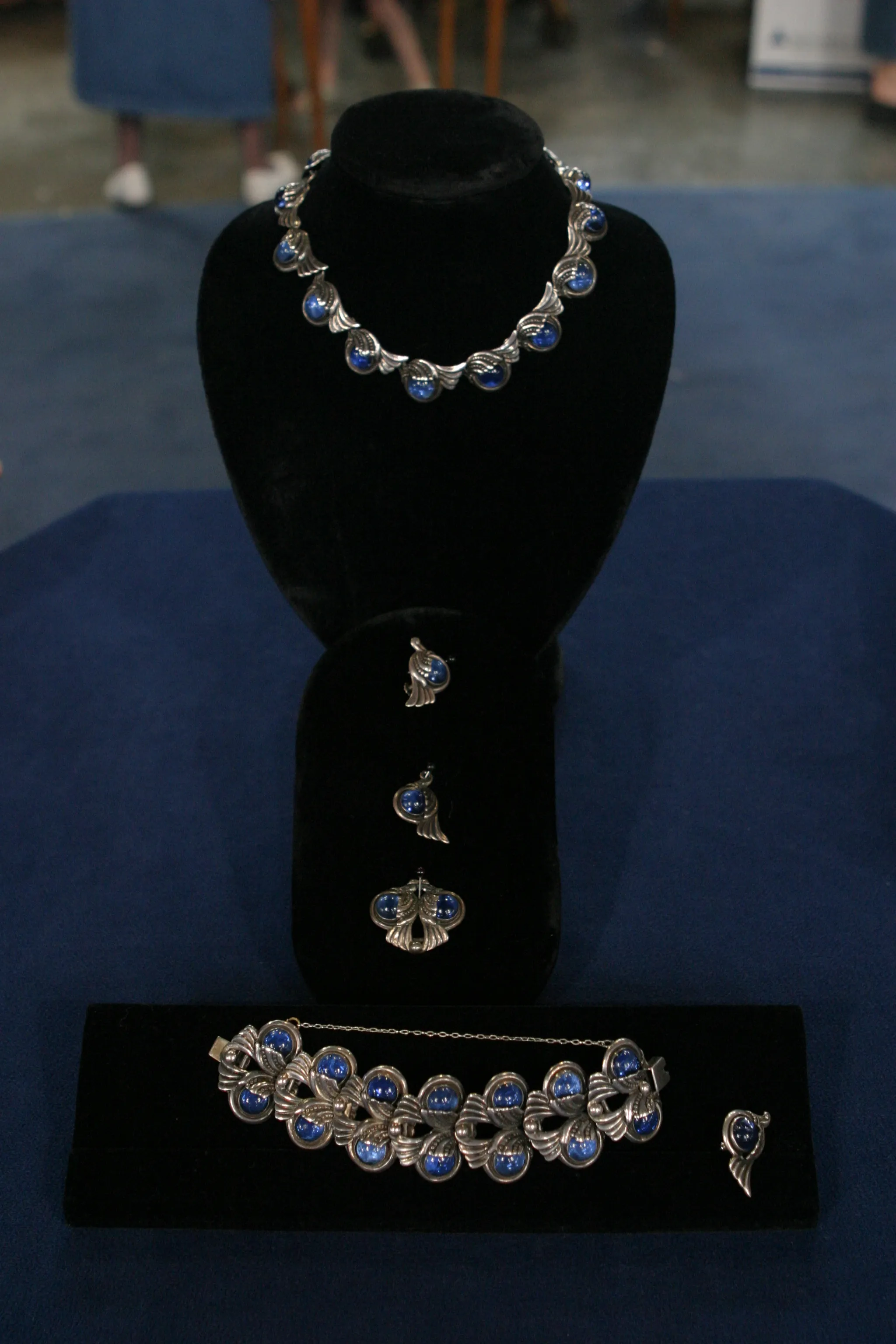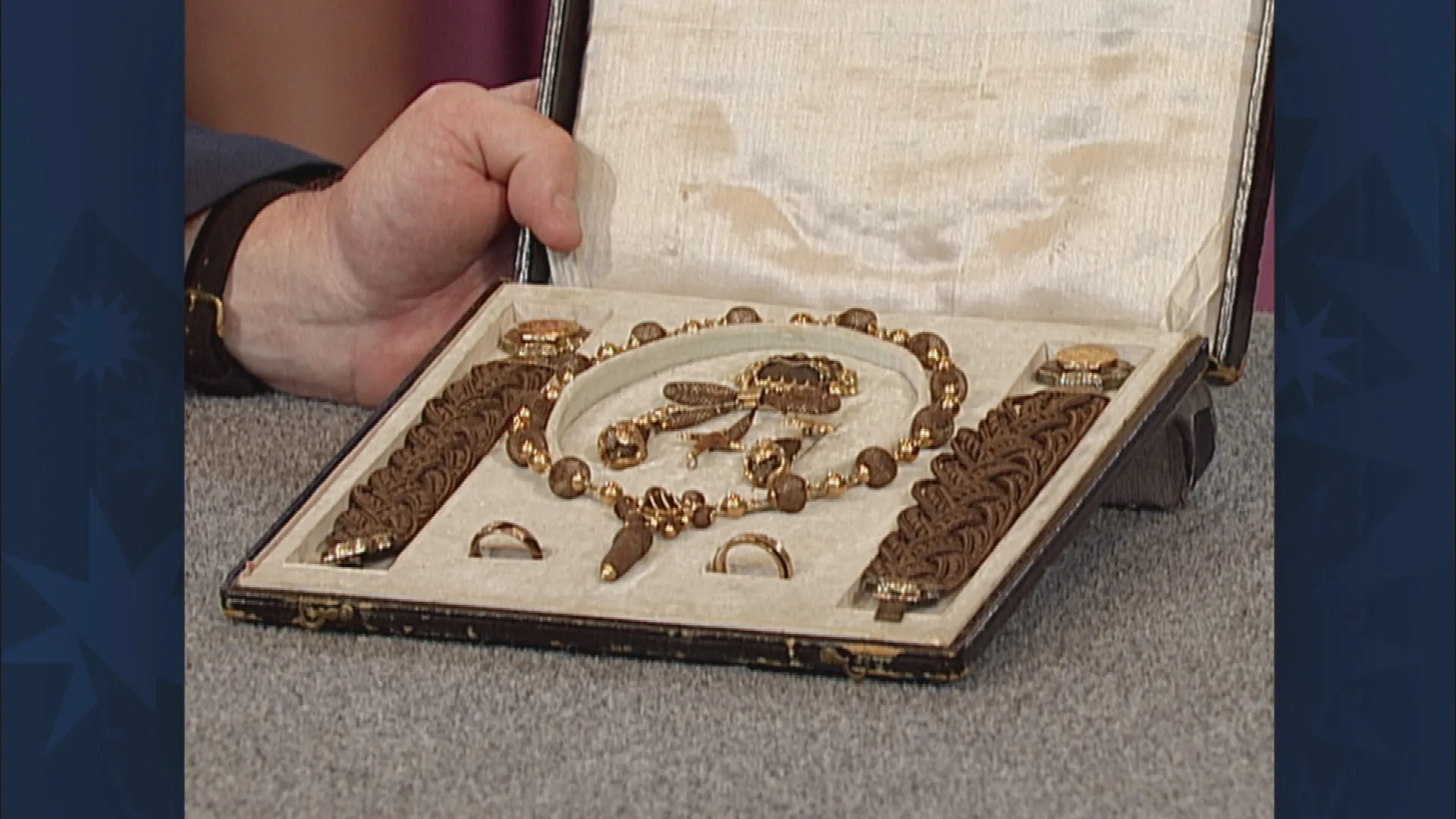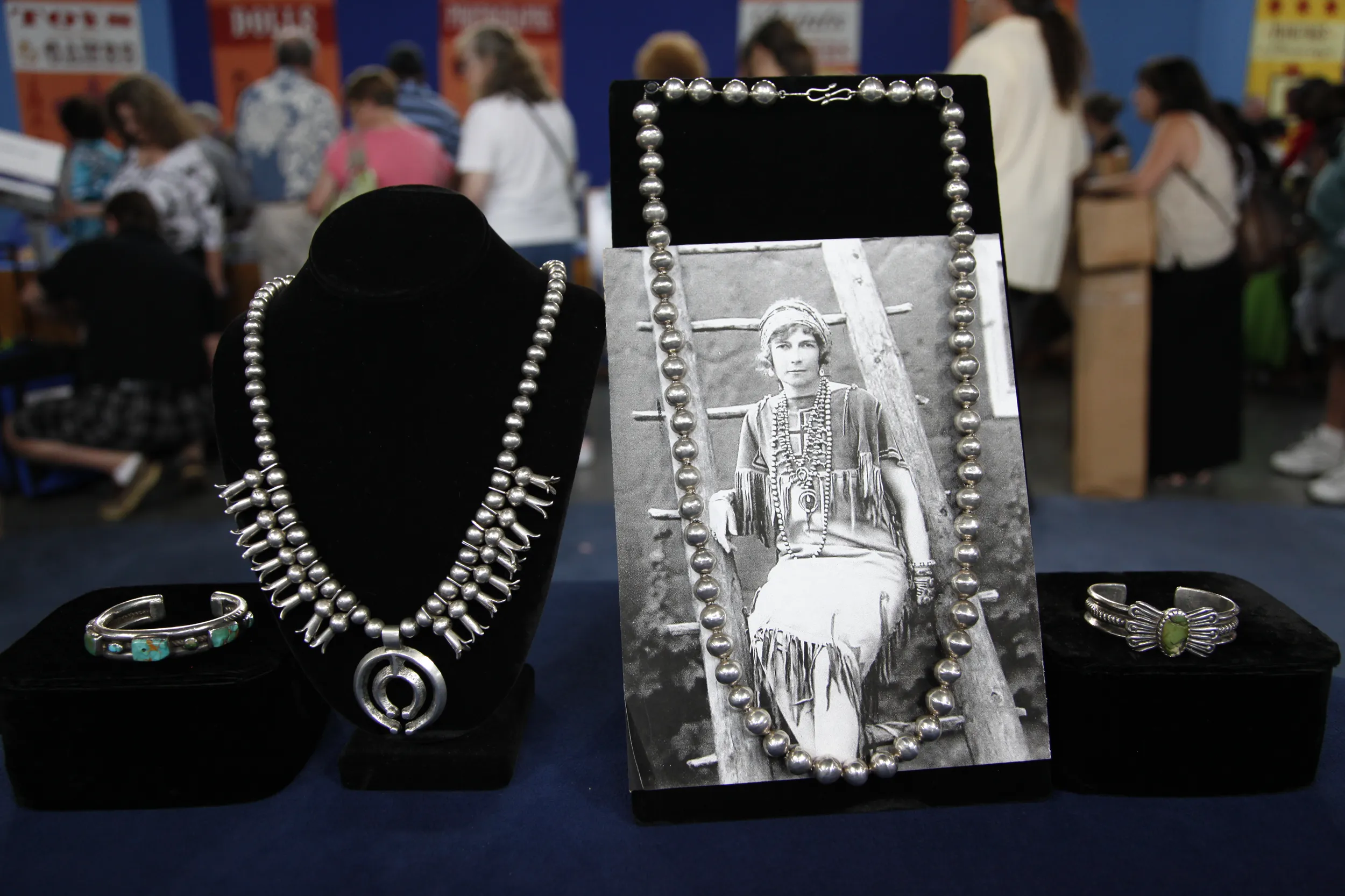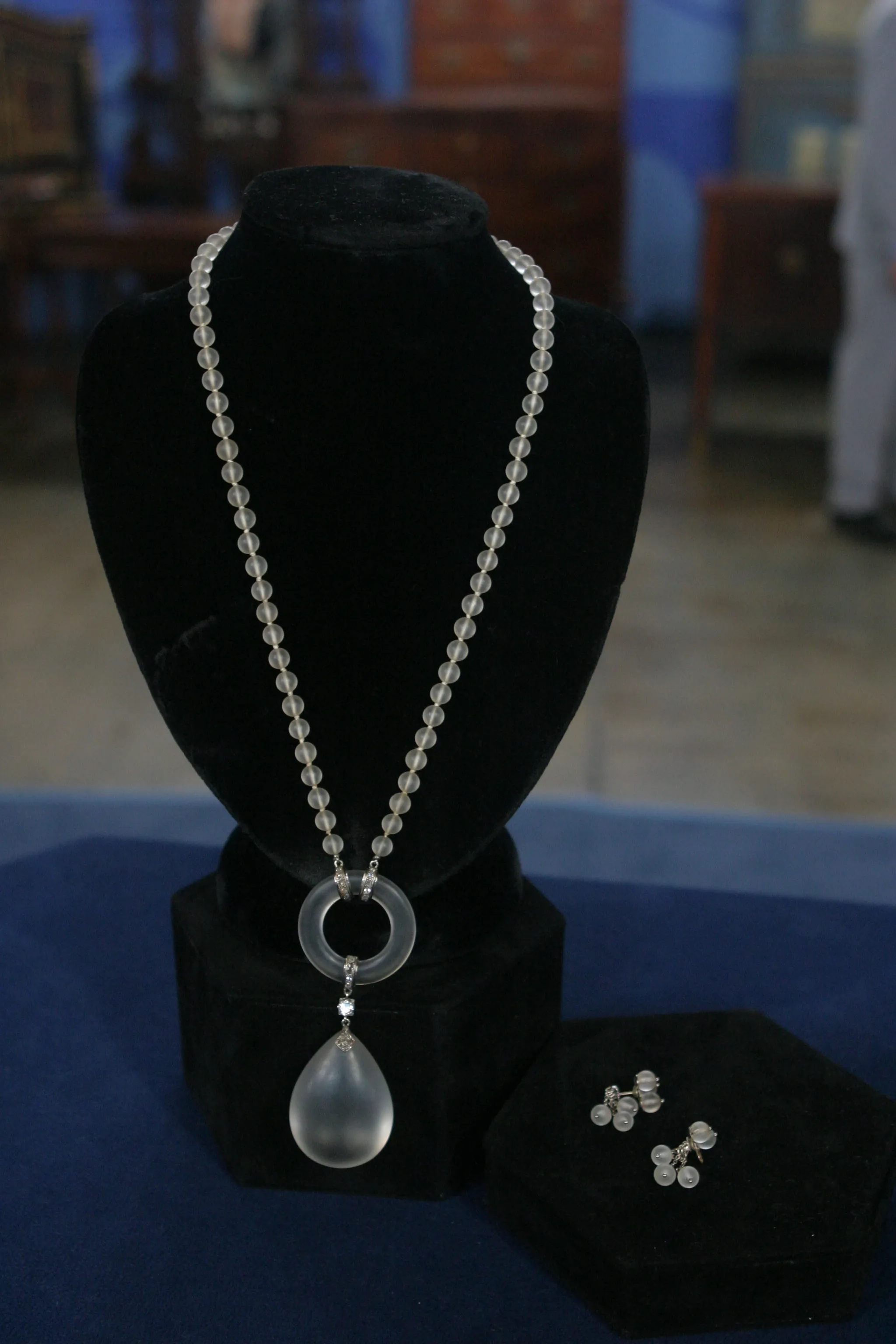GUEST: My mother-in-law was an antique jewelry dealer. She collected these, and my husband has gifted them to me over the years.
APPRAISER: And what do you need to know about them? I mean, she was in the business. You must know so much.
GUEST: Actually, not much. I know she loved Art Nouveau or Art Deco, I really don't know the difference. I don't know what these pieces are, where they were made.
APPRAISER: They are Art Nouveau, not Art Deco. Art Nouveau came first. It dates probably from around 1890 to around 1910, 1915, and after World War I, that's when Art Deco became popular. Later.
GUEST: Later.
APPRAISER: And this is classic Art Nouveau jewelry. You have the first piece right here. This is an opal, diamond, enamel, and what you also have is a little armature that converts it into a brooch. And then you have the original chain, which has green enamel little bosses. When I turned it over-- and we always try to say, "Okay, this should be signed" and sure enough, we found a signature. The signature is right in here. You didn't know it was signed.
GUEST: No, we've looked for marks and we haven't found them.
APPRAISER: And the signature is Marcus & Company, who was an American jeweler that rivaled Tiffany, worked around the same time, and he loved Art Nouveau. He specialized in the use of opals, enamel, gold. He did some extraordinary jewelry. This is a quiet... I call it a quiet opal. It doesn't have so much coloring, but it fits into the scheme of the brooch, and certainly with the enamel. And look at how he's holding the opal. Instead of just having prongs, it sort of undulates and it's all in that theme of Art Nouveau. Now here, you have another piece which is also Art Nouveau, but this one is made in France. It's heftier, the way the gold is beautifully chased, the beautiful natural pearls, the diamonds. This also has its chain. I found a mark on the chain, and of course, it had the French hallmark, and it also had the maker's mark, but it's very hard to see. But I had to dismantle it. I know you were worried.
GUEST: Yeah, a little bit.
APPRAISER: I had to dismantle it to find the mark, and sure enough, it's difficult to see, right there is the hallmark.
GUEST: We never found it.
APPRAISER: The French, when it was great, they signed it. This one has a poinçon, which is sort of a mark that has the maker's mark. It says G. and FrËre, G. and FrËre. There's a specific book that we have to look thru to find the G. and FrËre. I'm going to give you a value for the American piece, the Marcus & Company, and I would say an auction value would be between $8,000 and $12,000.
GUEST: Wow.
APPRAISER: If you had to insure it, you're probably going to say $15,000 to $20,000 to insure it.
GUEST: Mm-hmm.
APPRAISER: The French piece, I'm going to say $12,000 to $18,000.
GUEST: Mmm. My goodness.
APPRAISER: If you had to insure it, you're looking at at least $20,000 to $25,000. Very difficult to find them complete with the chain, with the markings. You have great examples of American Art Nouveau and French Art Nouveau jewelry. You're very, very lucky.
GUEST: Wonderful.

